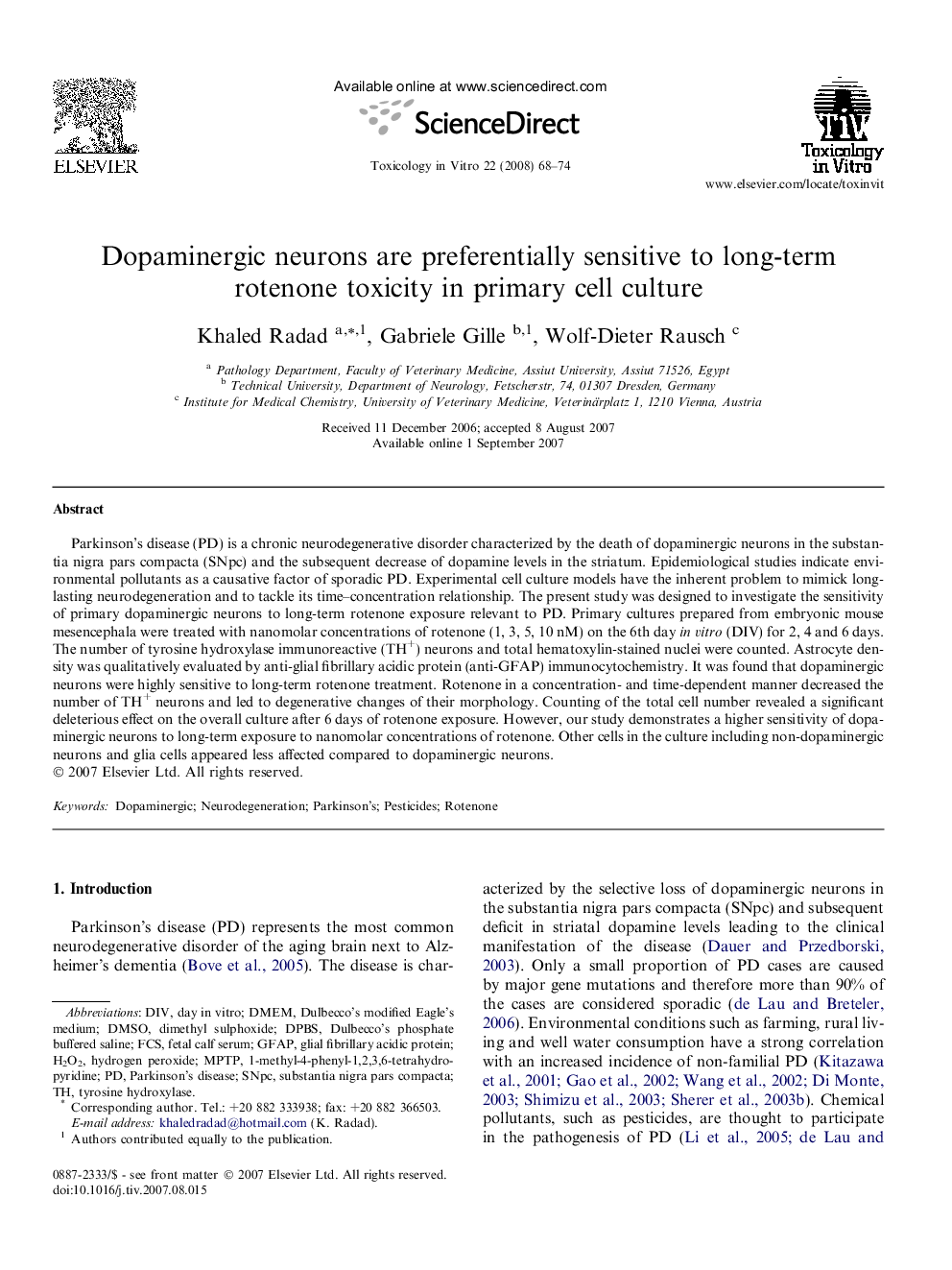| Article ID | Journal | Published Year | Pages | File Type |
|---|---|---|---|---|
| 2603618 | Toxicology in Vitro | 2008 | 7 Pages |
Parkinson’s disease (PD) is a chronic neurodegenerative disorder characterized by the death of dopaminergic neurons in the substantia nigra pars compacta (SNpc) and the subsequent decrease of dopamine levels in the striatum. Epidemiological studies indicate environmental pollutants as a causative factor of sporadic PD. Experimental cell culture models have the inherent problem to mimick long-lasting neurodegeneration and to tackle its time–concentration relationship. The present study was designed to investigate the sensitivity of primary dopaminergic neurons to long-term rotenone exposure relevant to PD. Primary cultures prepared from embryonic mouse mesencephala were treated with nanomolar concentrations of rotenone (1, 3, 5, 10 nM) on the 6th day in vitro (DIV) for 2, 4 and 6 days. The number of tyrosine hydroxylase immunoreactive (TH+) neurons and total hematoxylin-stained nuclei were counted. Astrocyte density was qualitatively evaluated by anti-glial fibrillary acidic protein (anti-GFAP) immunocytochemistry. It was found that dopaminergic neurons were highly sensitive to long-term rotenone treatment. Rotenone in a concentration- and time-dependent manner decreased the number of TH+ neurons and led to degenerative changes of their morphology. Counting of the total cell number revealed a significant deleterious effect on the overall culture after 6 days of rotenone exposure. However, our study demonstrates a higher sensitivity of dopaminergic neurons to long-term exposure to nanomolar concentrations of rotenone. Other cells in the culture including non-dopaminergic neurons and glia cells appeared less affected compared to dopaminergic neurons.
